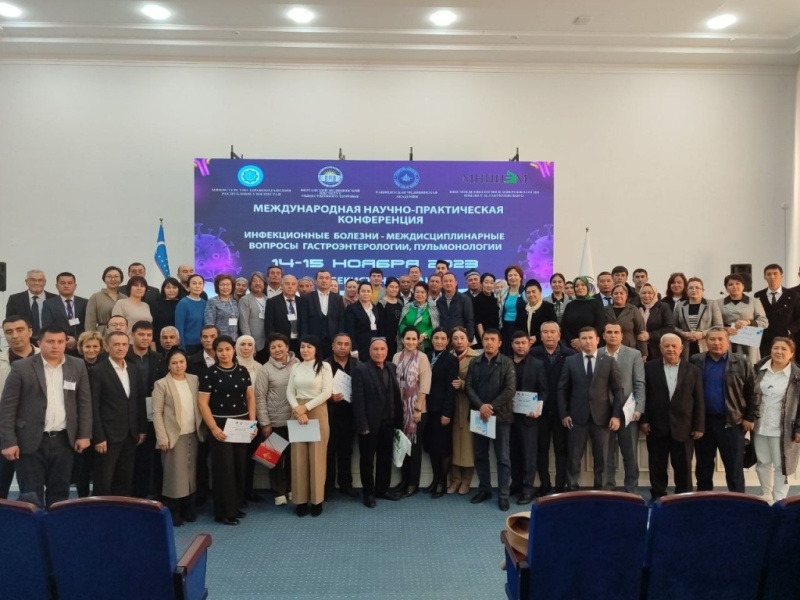
Family screening as a key to identifying Fabry disease patients
Experts are sure that the number of patients with Fabry disease, an inherited disease that affects the peripheral and central nervous systems, kidneys, heart, digestive system, and ocular organs, varies from 2.9 thous. to 5.8 thous. people in Russia. However, only 176[1] people receive therapy. The problem of undetected patients can be solved through family screening, according to speakers at the 9th All-Russian Congress of Patients.
Orphan diseases are characterized in that they are difficult to diagnose.
Nato Vashakmadze, MD, PhD., Head of the Department of Orphan Diseases and Prevention of Disabling Diseases, Research Institute of Pediatrics and Children’s Health Protection, Petrovsky NRCS:
In Russia, family screening is used for Fabry disease, that is, patients’ relatives undergo a molecular genetic examination. This method identified the pathology in almost 70 % of cases. In 20 % of patients, the disease was detected during hemodialysis procedures; in 10 %, a clinical diagnosis of Fabry disease was made.
Ekaterina Zakharova, MD, PhD, Head of the Laboratory of Hereditary Metabolic Diseases, FSBSI RCMG, listed the basic rules on how to diagnose Fabry disease effectively:
However, Dr. Zakharova also mentioned problems associated with family screening. First, doctors of various specialties have insufficient knowledge of genetics. In addition, physicians do not offer genetic counseling for all patients, while patients’ low awareness of the importance of informing their relatives about the diagnosis only worsens the diagnostic capabilities.
Sergey Moiseev, Professor, Corresponding Member of the Russian Academy of Sciences, Director of E.M. Tareev Clinic, I.M. Sechenov First MSMU, added that technical problems, such as searching for and testing relatives, or families refusing diagnostics for various reasons, also hinder proper family screening.In addition to identifying patients through family connections, doctors realize the importance of screening patients from the group suffering from hereditary metabolic diseases. According to Nato Vashakmadze, doctors should pay close attention to patients with a burdened family history, as well as if their condition suddenly deteriorates:in case of hyperexcitability, diffuse muscle hypotonia, motor disorders, acute cerebrovascular disorders, developmental delay in children, and behavior disorders.
Identifying patients with Fabry disease in high-risk groups also opens up the possibility of family screening, Sergey Moiseev believes.
Fabry disease is a rare chronic progressive pathology. Without treatment, patients can die at 40–50 years of age. Therefore, the importance of timely screening and initiating therapy is obvious since once pronounced clinical changes occur, treatment may no longer help.
In Russia, drug provision for patients with Fabry’s disease has become more affordable, since Fabagal®, the first biosimilar based on beta-agalsidase, is now available on the domestic market. The drug has been registered and used in South Korea since 2014 for treatment of Fabry disease in adults and children over 8 years of age. In August 2023, Fabagal® was registered in Russia[2], and its supply to the market began in November.
In 2024, the full production cycle of the drug will be carried out in Russia under a joint project between Petrovax and the South Korean company ISU Abxis. The registered price of Fabagal® is 40 % lower than that of the similar product in the market[3], which will cover a larger number of patients.
1 https://orphan-genom.ru/zabolevaniya/bolezn-fabri/istoriya-bolezni-fabri/
2 Marketing authorization for Fabagal® LP-No. (002966)-(RG-RU) dated 08/08/2023. https://grls.minzdrav.gov.ru/GRLS.aspx?RegNumber=&MnnR=&lf=&TradeNmR=Фабагал&OwnerName=&MnfOrg=&MnfOrgCountry=&isfs=0®type=1%2c6&pageSize=10&order=Registered&orderType=desc&pageNum=1
3 https://grls.minzdrav.gov.ru/GRLS.aspx?RegNumber=&MnnR=&lf=&TradeNmR=Фабагал&OwnerName=&MnfOrg=&MnfOrgCountry=&isfs=0®type=1%2c6&pageSize=10&order=Registered&orderType=desc&pageNum=1
An international scientific and practical conference on infectious diseases was held in Uzbekistan


